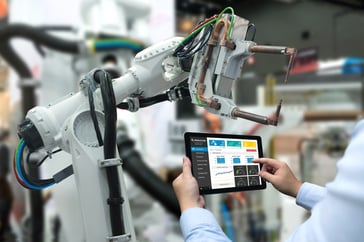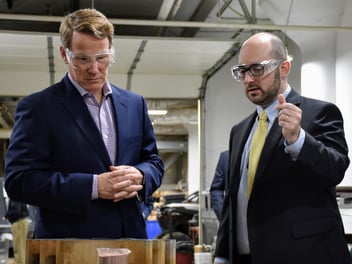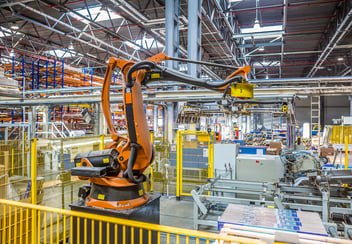3 Technology Trends Transforming Manufacturing
 The widespread adoption of technology is transforming manufacturing operations. Nearly 49% of manufacturers nationwide are using Industry 4.0 innovations, like automation and IIoT (Industrial Internet of Things), to improve productivity and output.
The widespread adoption of technology is transforming manufacturing operations. Nearly 49% of manufacturers nationwide are using Industry 4.0 innovations, like automation and IIoT (Industrial Internet of Things), to improve productivity and output.
However, in our 2019 State of Northeast Ohio Manufacturing Report, we discovered that regional manufacturers may be slower to adopt these sort of revolutionizing technologies. A small but growing number of companies reported that they have “just started with this technology” for the following:
- Smart or connected machines (34%)
- General, non-robotic automation (33%)
- Basic 3D printing (27%)
- Smart or connected products (25%)
- Standard robots (18%)
The data above uncovers a largely untapped opportunity for manufacturers to better emerge their companies in advanced technology.
But before manufacturers jump right in and fight for technology implementation and adoption, it’s important to understand how certain techs can work, how they’re used, and what benefits they may reap.
Below, we detail three common technology trends that are impacting manufacturing processes.
1. Expansion of the Industrial Internet of Things (IIoT)
Global spending for Internet of Things (IoT) technology is expected to reach $1.29 trillion by 2020. Furthermore, the U.S. manufacturing industry is expected to account for 15% of all IoT spending.
Even more specific to manufacturers is the IIoT — a system of digitally connected smart devices that collect, send, and act on data to enhance manufacturing and industrial processes.
Technologies like machine learning, big data, and sensor data are now used to improve maintenance, monitoring, and safety. This helps manufacturers minimize downtime and enhance efficiency. Experts expect the number of IIoT devices will double between 2017 and 2020.
2. More Emphasis on Cybersecurity
Any device that connects to the Internet is vulnerable to a cyber attack. The risk of a cyber attack increases for manufacturers utilizing connected devices across the manufacturing floor.
Manufacturing is one of the most targeted industries for cyberattacks. Not only does cyber crime tarnish reputations, leaving consumers and investors wary of a company’s processes, they also cost a significant amount of money. The U.S. National Center for Manufacturing Sciences estimates a cyber breach costs manufacturing companies between $1 million and $10 million.
As manufacturers implement new digital technology, there’s a greater risk for a cyberattack. Manage the increasing risk of cyber threats by:
- Updating all connected devices.
- Securing Internet connections with firewalls and strong passwords.
- Segregating critical data and limiting access.
- Educating employees on the importance of cybersecurity and the effect of their actions.
- Installing antivirus software on computers.
>>> MAGNET’s cybersecurity experts offer formal cybersecurity threat assessments that help you identify vulnerabilities to keep your company safe from hackers.
3. Continued Push for 3D Printing
3D printing, or additive manufacturing, has made a huge splash in recent years, as manufacturers realized just how fast the technology accelerated prototyping and product development. In the past, a single product could require several different parts to reach the final stages. Now, with 3D printing, manufacturers can create the entire product in one process. This speeds up production, saves time on labor, and reduces waste.
Now and in coming years, 3D printing can potentially transform the manufacturing industry. With 3D printing becoming more widely available, you can anticipate it being a top technology trend in manufacturing this year. Rapid advances in material science and printing technology are lowering costs and broadening use.




